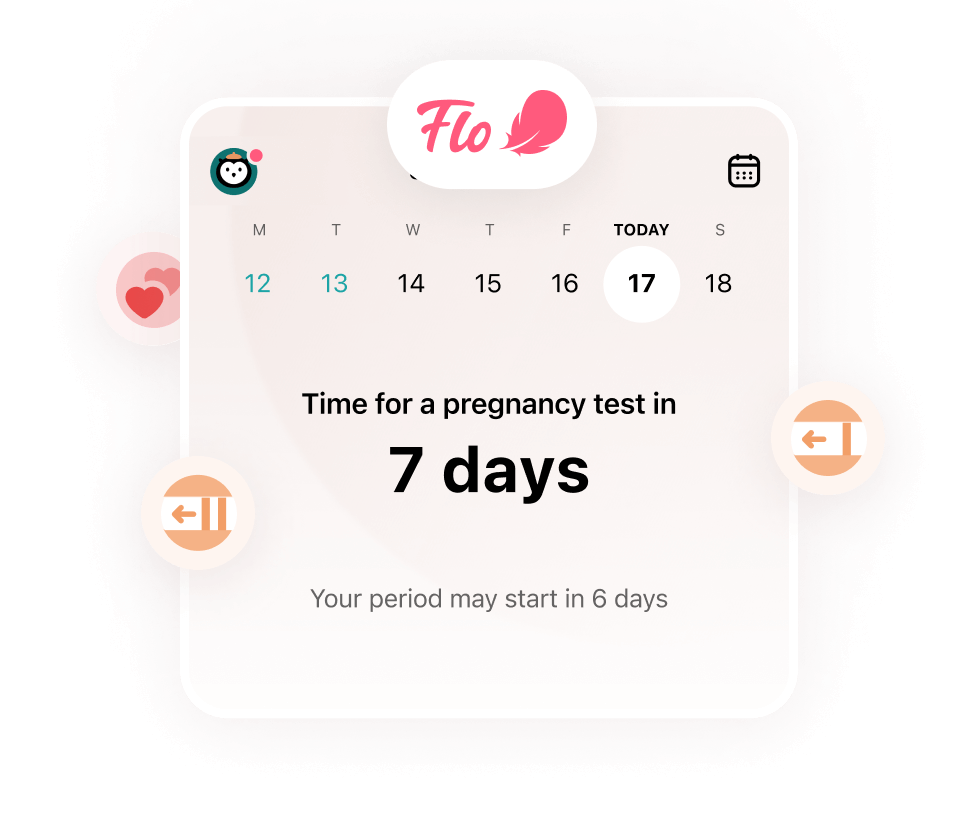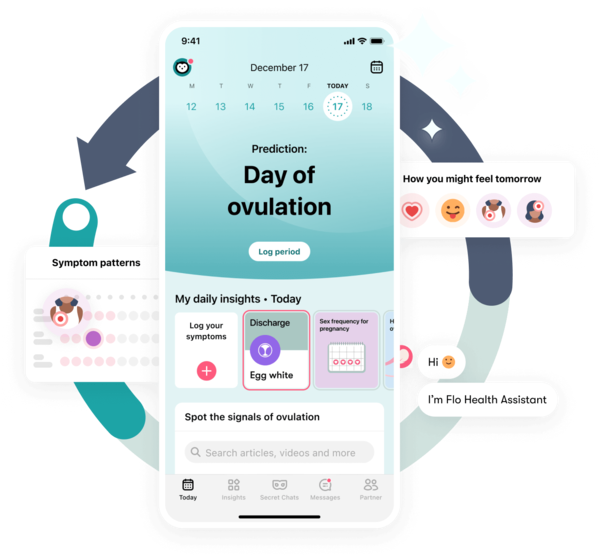When it comes to taking a pregnancy test, timing can be key. But are there any other do’s and don’ts? Here, a Flo expert shares all.
-
Tracking cycle
-
Getting pregnant
-
Pregnancy
-
Help Center
-
Flo for Partners
-
Anonymous Mode
-
Flo app reviews
-
Flo Premium New
-
Secret Chats New
-
Symptom Checker New
-
Your cycle
-
Health 360°
-
Getting pregnant
-
Pregnancy
-
Being a mom
-
LGBTQ+
-
Quizzes
-
Ovulation calculator
-
hCG calculator
-
Pregnancy test calculator
-
Menstrual cycle calculator
-
Period calculator
-
Implantation calculator
-
Pregnancy weeks to months calculator
-
Pregnancy due date calculator
-
IVF and FET due date calculator
-
Due date calculator by ultrasound
-
Medical Affairs
-
Science & Research
-
Pass It On Project New
-
Privacy Portal
-
Press Center
-
Flo Accuracy
-
Careers
-
Contact Us
What not to do before taking a pregnancy test — verified by doctors


Every piece of content at Flo Health adheres to the highest editorial standards for language, style, and medical accuracy. To learn what we do to deliver the best health and lifestyle insights to you, check out our content review principles.
If you’re trying to conceive, there’s no time more frustrating than the two weeks between ovulation (or embryo transfer if you are doing IVF) and the first day of a late or missed period. Your no-show period marks the first day when it’s advised that you can do a pregnancy test. This is when a test can finally give you a reliable result. It’s a big milestone moment.
If you’ve waited it out and you’ve got your at-home test in hand, there are a few things you can consider before you tear open the package. So, here’s the lowdown on some pregnancy test do’s and don’ts and how to read your results, all verified by one of Flo’s doctors.
Key takeaways
- Pregnancy tests work by measuring the amount of human chorionic gonadotropin (hCG) in your urine. Your body starts to produce this hormone after your fertilized egg has traveled down one of your fallopian tubes and implanted into the wall of your uterus.
- Your hCG levels rise gradually over time, and the higher your levels, the easier they’ll be detected by a test. This is why it’s so important to wait until the first day of your late or missed period before taking a pregnancy test.
- If you take a test too early, there won’t be enough hCG in your urine, and you could get a false negative result.
- Similarly, you might think it’ll be handy to drink lots of water before your test or save it until your last pee of the day. However, this isn’t as helpful as you’d think.
- From reading your test instructions to taking more than one test, a Flo expert passes on some tips and tricks when it comes to taking a pregnancy test.
Six don’ts before taking a pregnancy test
1. Don’t take the test too early

 Over
7.8M
ratings averaging
4.8/5
*
Over
7.8M
ratings averaging
4.8/5
*
Make sense of pregnancy testing with the Flo app
- Know when it’s the right time to take a test.
- Log results of previous pregnancy tests.
- Chat with others who are trying.
 Over
7.8M
ratings averaging
4.8/5
*
Over
7.8M
ratings averaging
4.8/5
*

Hoping for a positive pregnancy test?
The Flo app can help you on your path to parenthood.

 Over
7.8M
ratings averaging
4.8/5
*
Over
7.8M
ratings averaging
4.8/5
*
Make sense of pregnancy testing with the Flo app
- Know when it’s the right time to take a test.
- Log results of previous pregnancy tests.
- Chat with others who are trying.

You may have seen people on social media merrily sharing faintly positive pregnancy tests, claiming it’s just days after they’ve ovulated. However, if you want to give yourself the best chance at an accurate result (and let’s be honest — that’s the goal), doctors recommend that you wait a little longer.
This might sound easier said than done. “I know it’s hard to wait!” says Dr. Jennifer Boyle, an obstetrician and gynecologist at Massachusetts General Hospital, US. However, she explains that the wait between when implantation might have happened and your next period is essential.
Here’s why: Human chorionic gonadotropin (hCG), the hormone pregnancy tests detect, needs a chance to increase before a home pregnancy test can give you a reliable result. At the start of pregnancy, your fertilized egg (known as an embryo) releases hCG. Your body produces a whole new organ in early pregnancy called the placenta, which plays a fundamental role in supporting your growing baby. The placenta starts to grow and develop around 4 weeks and takes over with releasing hCG. Your hCG levels rise quickly and peak around 10 weeks of pregnancy.
By the time of the first day of a no-show period, your hCG levels are high enough for a pregnancy test to detect. “Checking too early is just likely to add stress and confusion,” says Dr. Boyle.
Take a quiz
Find out what you can do with our Health Assistant
2. Don’t drink excessive amounts of fluids

It might sound counterintuitive, but you don’t need to drink more water than normal before taking a pregnancy test. More urine doesn’t equal a more accurate result. In fact, you could dilute your pee, meaning the test might not be able to detect hCG as easily. It will “literally water down the amount of hCG that is in your urine,” says Dr. Boyle. This could give you a false negative result or a very faint positive, which can be confusing.
3. Don’t take a test too late in the day

You may have come across the acronym FMU — first morning urine — online. This is the best time to take a pregnancy test because you haven’t consumed anything for a few hours, and your urine is at its most concentrated. So, if you remember, try to do your pregnancy test during your first bathroom visit of the day.
However, some tests are sensitive enough that it doesn’t matter what time of the day you take them. If you can, try to wait until it’s been around three hours since you last peed.
4. Don’t ignore instructions on the test

Home pregnancy tests can be confusing. Some will show a plus symbol if they’re positive. Others will show two lines. And others will tell you your result in words. Similarly, the way you take them and the waiting period before the test shows your result can differ says Dr. Boyle.
“All [at-home] pregnancy tests work by introducing urine into the test device in order to get a reading. However, how this happens can differ from test to test,” she says. For example, some might ask you to pee directly onto the stick, while others might suggest peeing into a clean cup and dipping the test in.
Take a minute before you do the test to familiarize yourself with the instructions. Similarly, pregnancy tests have a use-by date, so make sure the one you have is still valid.“You would hate to do that part wrong and have to pee again,” says Dr. Boyle.
5. Don’t rely on just one test

Most pregnancy tests come in boxes of two for a reason: One may be faulty (you can tell because the control line will fail to appear), or you may make a mistake when taking the first one. You’d be surprised how often this happens.
However, pregnancy test manufacturers say that when their devices are used correctly, they are 99% accurate. So, if you have a clear positive or negative result, take that second test to confirm it.
Tests can get costly, so after you’ve tested once, and twice if you’d like to confirm it at home, reach out to your doctor. “I have heard stories of people doing 10 or more tests just to make sure,” says Dr. Boyle. “If you wait until you have missed your period and you have been trying to get pregnant, then a positive pregnancy test makes sense. And if your test is negative, then you will likely get your period soon, which will also confirm that you are not pregnant.”
6. Don’t panic if results are unclear

If your test result isn’t immediately obvious, then you may feel a little panicky, especially if you have been waiting a long time to get this news. Your control line might fail to appear. This means the test is faulty. Alternatively, you might see a faint positive. This could mean that you’re very early on in your pregnancy or that your pee was too diluted to get an accurate result.
Whatever the cause, ideally, you should take another test. If it’s from the same box as your first one, make sure it’s not an expired test. If your second test is unclear too, wait another day or two to take one more.
If you’re still not sure, reach out to a health care professional who may suggest a blood test. And remember, whatever the test shows doesn’t change what’s happening in your body. “You either are pregnant or you are not, and unclear results don’t change this reality,” says Dr. Boyle. “You got this!”
Make it easy to track your fertile window
Understanding your fertile window before you take a pregnancy test can help give you a guide as to when ovulation may happen for you, at what point in your cycle it’s best to have conception sex, and when you’re most likely to get pregnant. You can use Flo’s period-tracking app to log symptoms and chart your ovulation and menstrual cycles so you can keep track of the best time to test. Similarly, you can use our ovulation calculator.
If you’ve taken a pregnancy test and got a positive result, you can also take our Am I pregnant? quiz to learn more about the signs and symptoms of early pregnancy.
More frequently asked questions about what not to do before taking a pregnancy test
Can certain foods affect a pregnancy test?
There aren’t any foods that can affect the result of a pregnancy test, says Dr. Boyle. So unless you drank a lot of water before you took the test, that result should be accurate.
Can alcohol or weed affect a pregnancy test?
No, cannabis and alcohol won’t affect the result of your pregnancy test. However, it’s advisable to do it with a clear head. Some medications can give a false positive result, such as certain fertility drugs or antihistamines. Reach out to a health care professional if you aren’t sure.


Hey, I'm Anique
I started using Flo app to track my period and ovulation because we wanted to have a baby.


The Flo app helped me learn about my body and spot ovulation signs during our conception journey.


I vividly
remember the day
that we switched
Flo into
Pregnancy Mode — it was
such a special
moment.
Real stories, real results
Learn how the Flo app became an amazing cheerleader for us on our conception journey.
References
Betz, Danielle, and Kathleen Fane. “Human Chorionic Gonadotropin.” StatPearls, StatPearls Publishing, 2024, www.ncbi.nlm.nih.gov/books/NBK532950/.
“Fetal Development.” Cleveland Clinic, my.clevelandclinic.org/health/articles/7247-fetal-development-stages-of-growth. Accessed 10 Dec. 2024.
“Home Pregnancy Tests: Can You Trust the Results?” Mayo Clinic, 23 Dec. 2022, www.mayoclinic.org/healthy-lifestyle/getting-pregnant/in-depth/home-pregnancy-tests/art-20047940.
“Human Chorionic Gonadotropin.” Cleveland Clinic, my.clevelandclinic.org/health/articles/22489-human-chorionic-gonadotropin. Accessed 10 Dec. 2024.
“Placenta.” Cleveland Clinic, my.clevelandclinic.org/health/body/22337-placenta. Accessed 10 Dec. 2024.
“Pregnancy Tests.” Cleveland Clinic, my.clevelandclinic.org/health/diagnostics/9703-pregnancy-tests. Accessed 10 Dec. 2024.
“What Medications Can Cause a False Positive Pregnancy Test?” Drugs.com, 5 Mar. 2024, www.drugs.com/medical-answers/medications-false-positive-pregnancy-test-3566577/.
History of updates
Current version (10 January 2025)
Published (10 January 2025)
In this article

Get your personal guide to fertility
-
Learn how to read your body's ovulation signals
-
Find daily conception tips from our experts
-
Chat with others who are trying to get pregnant




